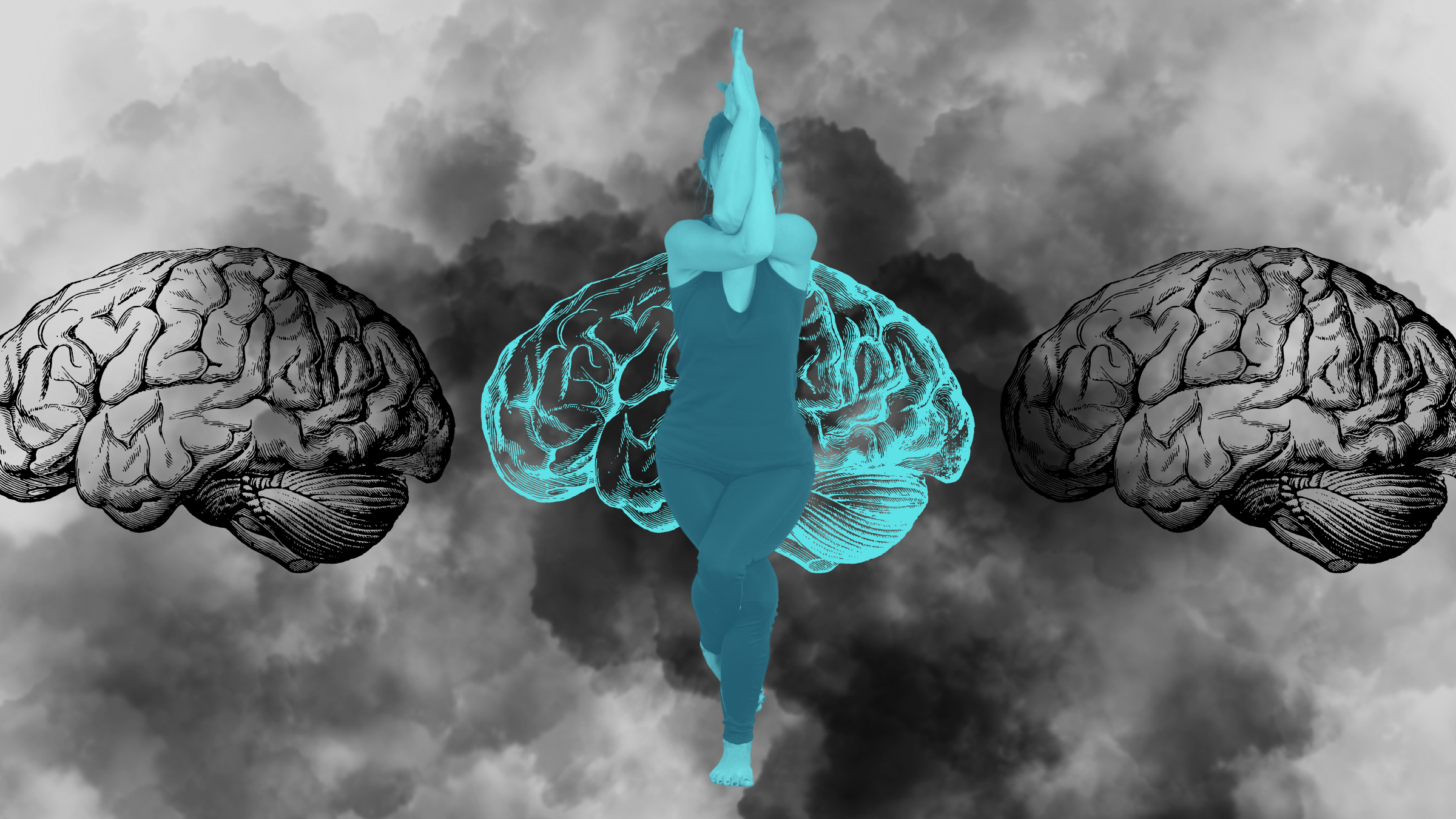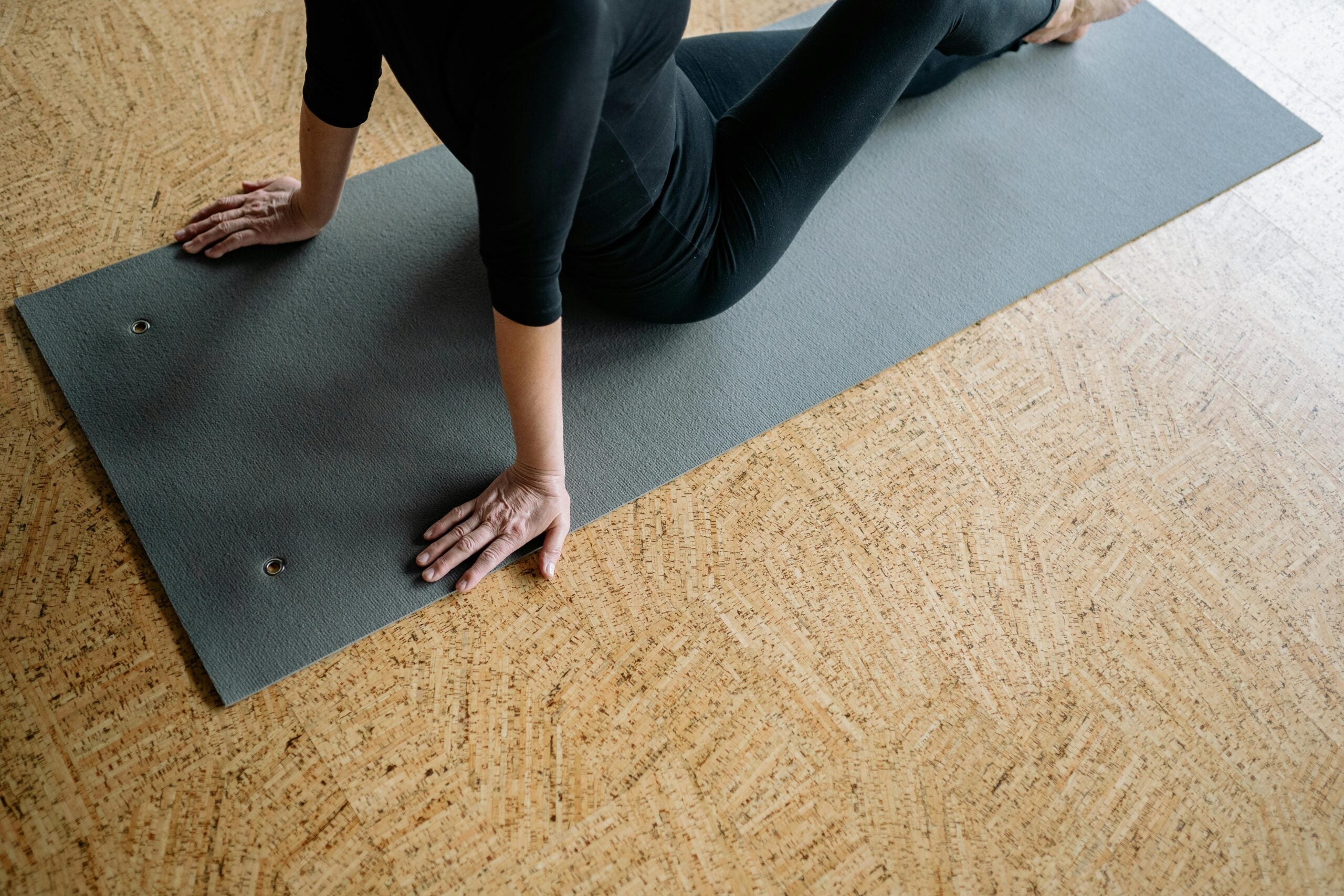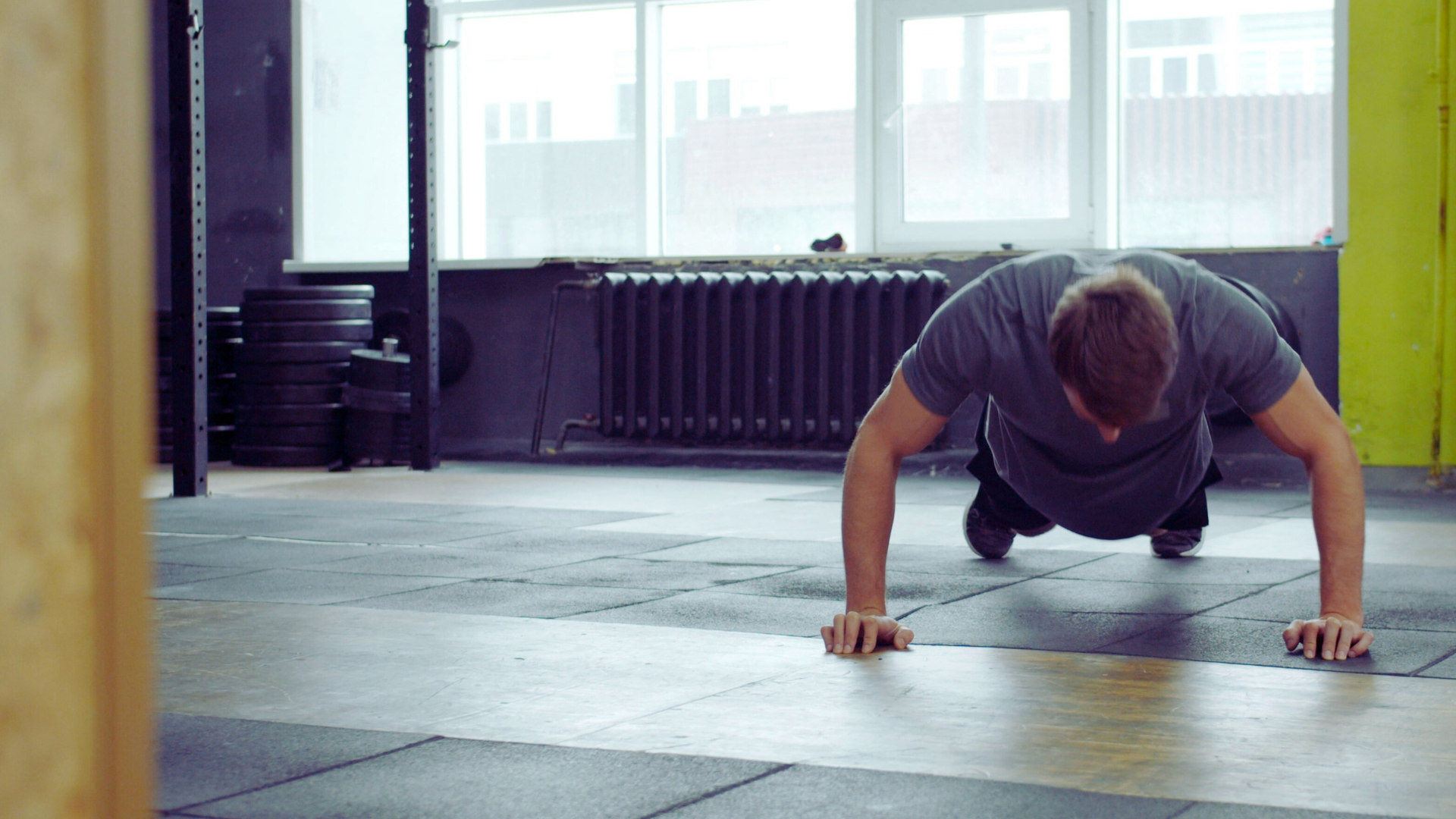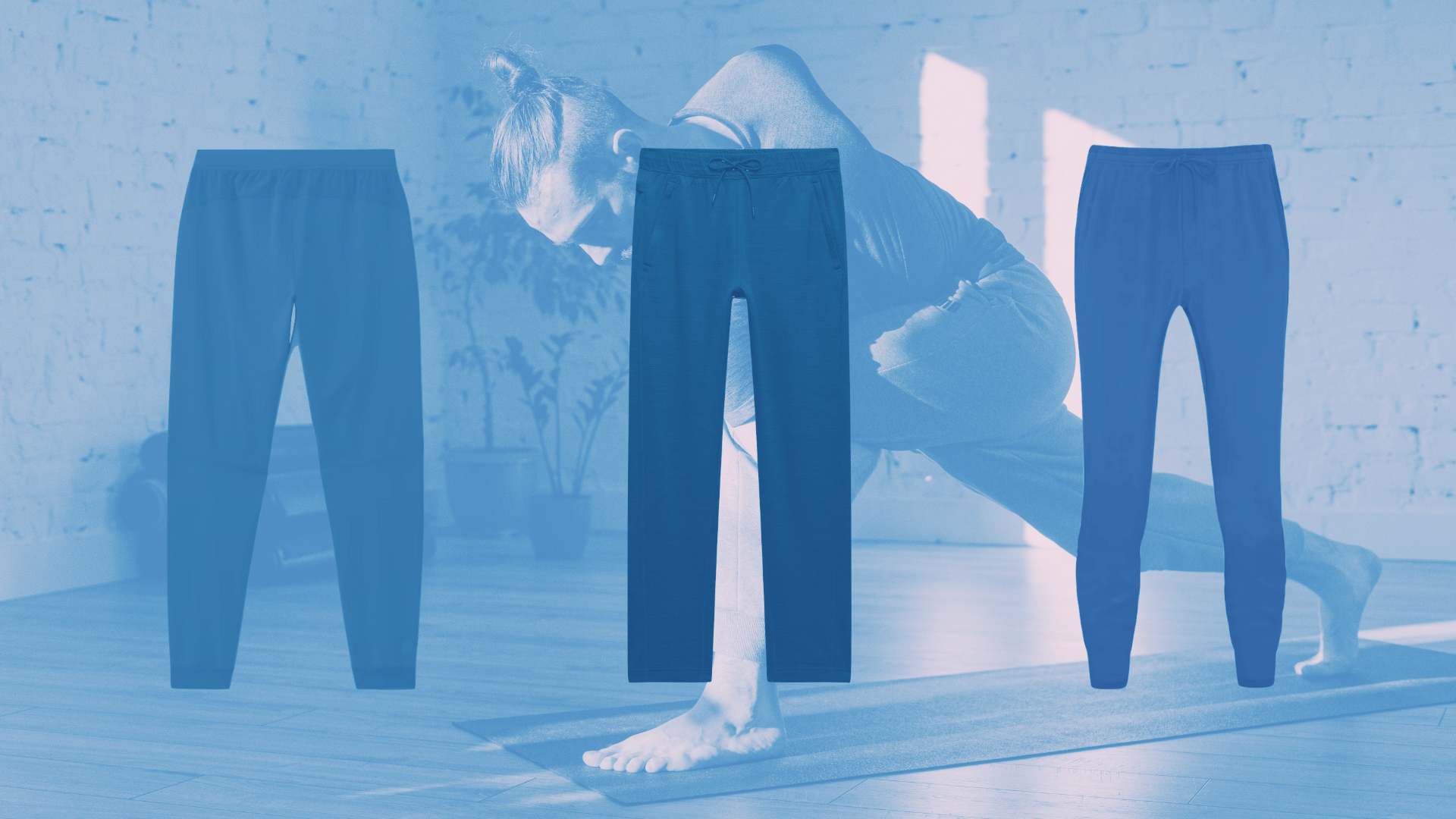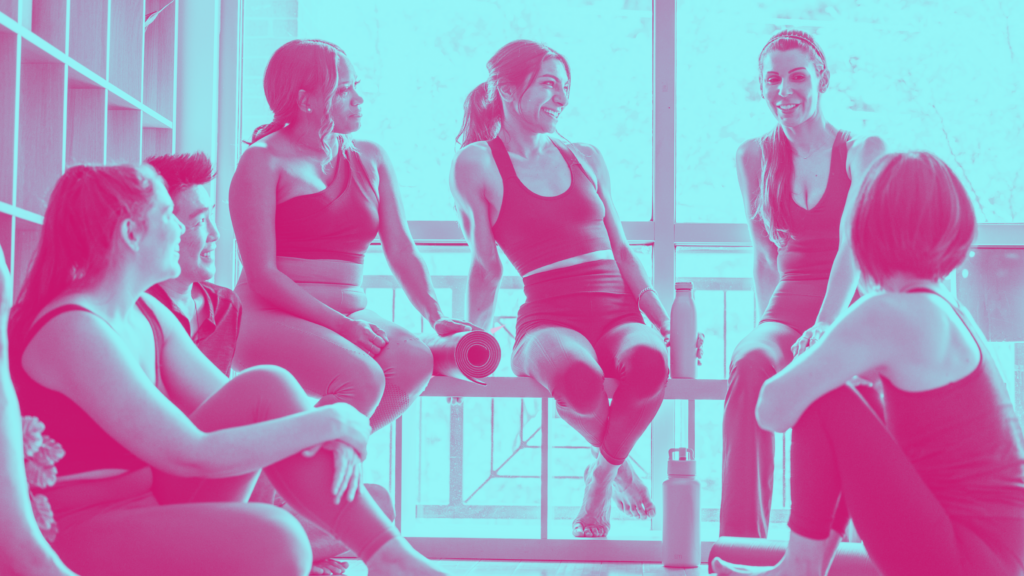“], “filter”: { “nextExceptions”: “img, blockquote, div”, “nextContainsExceptions”: “img, blockquote, a.btn, a.o-button”} }”>
Heading out the door? Read this article on the new Outside+ app available now on iOS devices for members!
>”,”name”:”in-content-cta”,”type”:”link”}}”>Download the app.
The majority of mindfulness activities are calm and quiet. But sometimes, when you’re too angry, anxious, or stressed, sitting still is the last thing you want to do.
“When we’re in fight-or-flight mode, our nervous system wants to do something…it’s wired for movement,” says mindfulness teacher and author Rosie Acosta. Stomping your feet, screaming in the car, punching a pillow, or enjoying a high-intensity workout are all valid examples of active mindfulness. “It can be loud. It can be sweaty. It can be shaking on your bedroom floor,” says Acosta. “The key is presence.”
While Acosta considers this sort of movement a prelude to the ultimate sanctuary of stillness, doing something active, embodied, and even aggressive with that energy (safe expressions only, of course) can feel like a revolutionary act in of itself.
“I think there’s something deeply healing about letting our energy move in a way that is bold, expressive, and a little wild,” says meditation teacher Dora Kamau. “There’s the physical release but also the freedom that comes from emotional expression.”
Benefits of Active Mindfulness
The main benefit of this sort of mindfulness is the active part. Instead of squashing your emotions or attempting to silence them, this approach offers catharsis and, according to experts, a sense of control by giving you something to do.
“When we give ourselves permission to move with an intentional intensity, we create space for emotions that might otherwise stay stuck in the body—like anger, grief, or anxiety—to be explored, seen, felt, processed and released,” says Kamau. “This kind of movement invites us back into our bodies, into embodied presence, and into a more grounded state of being.”
Our experts note that, once you move through some of your louder uncomfortable emotions with active intention, what you’ll find underneath is a greater sense of calm. So embrace your high-energy state, but don’t be surprised if a want of stillness follows. “You don’t have to force it—start where you are,” says Acosta. “Once your body feels safe, calmer practices can offer the deeper integration work.”
12 Active Mindfulness Practices to Release Excess Energy
From (safely) punching and screaming to an impromptu dance party, these mindfulness activities make the act of calming down a real-deal verb.
1. Enjoy Some Primal Screaming
Primal screaming is exactly what it sounds like: the release of emotions via a loud, cathartic holler.
“It can offer psychological and emotional benefits when done safely and intentionally,” says psychologist Terri Bacow, PhD, citing emotional release, stress reduction, and a feeling of calm as potential primal screaming benefits. “Further, some people experience increased self-awareness from connecting with an unresolved inner conflict, and thus feel empowered.”
2. Jump Around
Bouts of aggressive intuitive movement—such as jumping, stomping, bouncing, jiggling, and shaking—can help reset the nervous system in just a few minutes.
“Emotions are energy; when they get stuck, they tend to become dense and heavy, so shaking and movement can help us to get emotions back into motion and support us in releasing them,” says Kamau. “Shaking the body or moving intuitively for just a few minutes can help discharge nervous energy and regulate the nervous system.”
3. Dance, Dance, Dance
This one is easy. Put on a high-energy song and get grooving—and make it as weird and expressive as you’d like. As Acosta notes, this is about release, not performance. “Let it be messy, stompy, wild,” she says.
4. Box Breathing with Clenched Fists
Yes, breathing exercises—active ones. Try box breathing—inhaling on a four-count, holding for four, exhaling on a four-count, holding for four—while clenching and releasing your fists. According to Acosta, pairing breath with muscular tension and release helps regulate both body and mind.
5. Take a Fast-Paced Walk
This is an especially good option for those who tend to spiral. “A brisk walk releases endorphins, reducing stress, anxiety, and symptoms of depression,” says Bacow. “It can be an energy and mood booster, enhancing circulation and the flow of oxygen in the body.”
Acosta notes that intention, rather than distraction, is key here. “Let your steps be your meditation,” she says.
6. Scream Into a Pillow
Channel your inner middle schooler and stifle your screams of frustration with a comfy pillow.
“Sounds intense, but it works,” says Acosta. “It gives voice to the thing you’ve been holding in.”
7. Hit the Gym
Doing productive or good-for-you things can be difficult when you’re seething. Still, if you’re able to get yourself to a gym, some solid movement can really help.
“A very intense workout, like running quickly on a treadmill or furiously climbing on a stair climber, will release endorphins and get your energy moving and out,” says Bacow. As a bonus, you’ll feel physically stronger, which is always a win.
8. Breath of Fire
Breath of fire—a mainstay of Kundalini yoga—is thought to “burn through” thoughts and stagnant energy. Plus, it’s expert-approved.
“This is probably one of my favorite breathing techniques,” says Kamau. “The rapid succession of the breath helps to increase circulation and oxygen flow which helps you to experience a sense of mental clarity and alertness.”
Breath of fire centers on short, forceful exhales through the nose. Kamau suggests two to three rounds of 30 breaths followed by a stillness practice. “It’s like what happens when you shake a snow globe,” she says. “It helps to get things moving and creates the internal conditions for us to settle and access a state of calm.”
9. Do Some Karaoke
This was suggested by Acosta as a tongue-in-cheek alternative to screaming into a pillow, but it’s genius. Pick your favorite angry or energetic jam and belt it out, whether in your house, your car, or—if you have the guts—at an actual karaoke bar.
10. Punch a Pillow
For a safe, private physical release of tension, take your anger out on a pillow.
“Physically acting out frustration or anger can help release built-up tension in your muscles and nervous system,” says Bacow, adding that a pillow is a safer target than walls, objects, or your fellow human beings. “Bottling up emotions can lead to greater stress and punching a pillow can be a way to acknowledge and express those feelings constructively.”
11. Try Somatic Journaling
If you’re searching for a high-energy release, journaling is likely not in your running list of mindfulness activities. But when you’re ready to process some of the emotions swirling around inside you, somatic journaling, or writing that focuses on sensation rather than thought, may be a good choice.
“There is something cathartic about allowing words, emotions, and sensations to live on the pages of a journal rather than in my mind,” says Kamau. She suggests journaling about your bodily sensations prior to an active practice and then again afterward, offering a few prompts below:
What sensations am I aware of in my body in this moment?
Where in my body am I holding tension or tightness?
What does it feel like?
What is my body trying to communicate to me through sensations and emotions?
12. Run Away
Okay, let’s be clear—we aren’t literally suggesting that you strive to escape the realities of the world. Rather, should you feel like a quick sprint down the block, our experts are in full support. Acosta swears by a quick run. “It’s like hitting a reset button,” she says. “You move the energy through instead of letting it fester in your chest or gut.”

